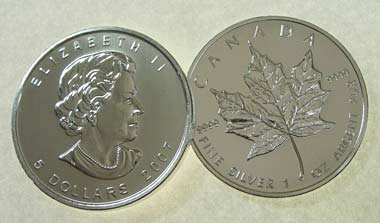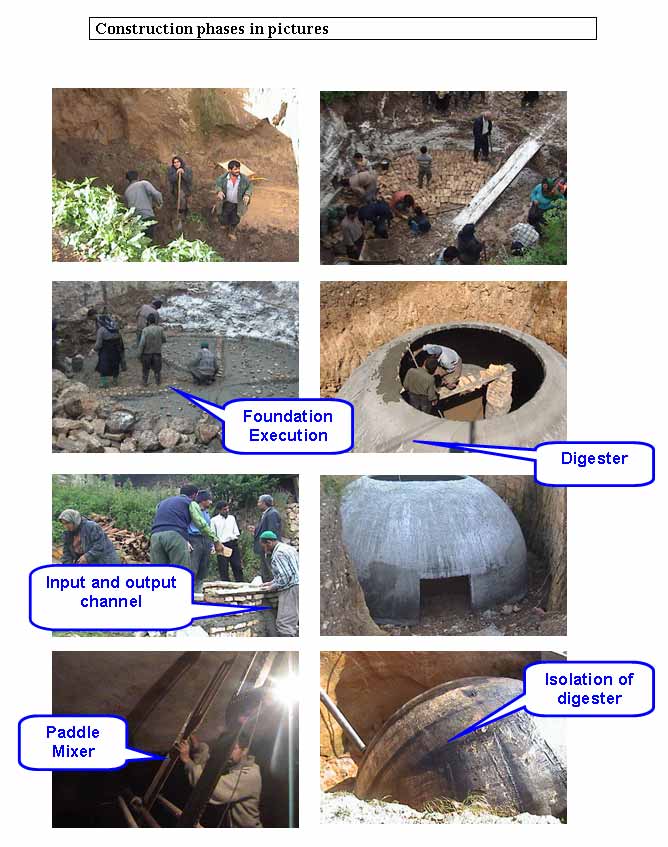بیوتکنولوژی صنعتی Industrial Biotechnology
این وبلاگ محلی برای به اشتراک گذاردن یافته ها و دانسته های علوم بیوتکنولوژیستبیوتکنولوژی صنعتی Industrial Biotechnology
این وبلاگ محلی برای به اشتراک گذاردن یافته ها و دانسته های علوم بیوتکنولوژیستOntario invests in biofuel
Ontario invests in biofuel
The provincial government of Ontario, Canada, has awarded $7.5 million (€4.77 million) for two biofuels projects.
Both projects intend to develop biofuels made agricultural byproducts, such as corn husks and manure, instead of from crops.
Approximately $5 million of the total funding is going to a research centre at the University of Western Ontario's experimental field station.
The second project will take place at a London, Ontario-area farm and focuses on generating green energy from manure and waste water.
Ontario produces close to 50 million tonnes of biomass a year, which has the potential to produce enough energy to power 7 million homes.
Since 2003, the Ontario government has invested more than $600 million in research devoted to green technologies and initiatives.
اثر زهر زنبور عسل در درمان MS
اثر زهر زنبور عسل در درمان MS
براساس یافتههای پژوهشگران مرکز تکثیر و پرورش جانوران آزمایشگاهی دانشگاه تربیت معلم، زهر زنبور عسل در درمان بیمای MS مؤثر است.
به گزارش ایسنا، دکتر محمد نبیونی، عضو هیات علمی دانشگاه تربیت معلم و مجری طرح با بیان این که نتایج این تحقیق برای ارائه در کنفرانس «طب تکمیلی» در دانشگاه علوم پزشکی اصفهان پذیرفته شده است، خاطرنشان کرد: در اجرای این تحقیق، بیماری MS به موشهای صحرایی نژاد «ویستار» القا شد، سپس تاثیر زهر زنبور عسل روی این موشها مورد بررسی قرار گرفت.
وی تصریح کرد: طی این بررسی، غلافهای میانی اعصاب ملینی با تاثیر زهر زنبور عسل شروع به بازسازی و ترمیم کردند.
دکتر نبیونی خاطرنشان کرد: بیماری MS نوعی اختلال در سیستم عصبی مغز است که در نوع شدید آن منجر به مرگ بیمار میشود. در بیماری MS بیمار با تخریب سیستم عصبی روبه رو و منجر به تخریب غلافهای میانی اعصاب ملینی میشود.
وی گفت: این تحقیق یکی از بخشهای طرح تحقیقاتی جامع تاثیرات بیولوژیک زهر زنبور عسل است که تاثیر زهر این حشره در درمان بیماریهای دیگر نیز در دست تحقیق و بررسی است.
گفتنی است این طرح تحقیقاتی توسط ساره رجبی، دانشجوی کارشناسی ارشد رشته سلول تکوینی و با راهنمایی دکتر نبیونی به مدت یک سال در مرکز تکثیر و پرورش جانوران آزمایشگاهی دانشگاه تربیت معلم به نتیجه رسیده است.
مرکز تکثیر و پرورش جانوران آزمایشگاهی اردیبهشت ماه سال گذشته در پردیس دانشگاه تربیت معلم گشایش یافت.
Italian biodiesel production to increase 28% in 2008
Italian biodiesel production to increase 28% in 2008
The Italian Biodiesel Association has stated that five new biodiesel plants are ready to come online and will increase national biodiesel capacity from 1.9 million tonnes and to 2.7 million tonnes.
The 12 existing plants produced only 469,707 tonnes due to high feedstock costs last year, down from more than 590,000 tonnes in 2006. The association is projecting that total production will reach 600,000 tonnes in 2008 and 800,000 tonnes in 2009.
Italian research has detailed the potential to use tobacco oil as a biodiesel feedstock. Researchers say that tobacco is a higher-yield crop than comparable biodiesel feedstocks.
The Chinese and Italian governments have initiated a feasibility study for jatropha biodiesel at Sichuan University. The project received $650,000 (€409,000) in support from Italy. The project is the third signed by Italy and China, promising cooperation in biofuels research since mid-April.
In April, Oxem Group began construction on a 60 million gallon a year canola-based biodiesel plant near Pavia, in Lombardy. Oxem will invest $100 million in the project that will use feedstock from France, Germany, Romania and Hungary. Last year, only 45,000 hectares of Italian crops produced feedstock for biodiesel.
In February, Mossi & Ghisolf announced that it will construct a 66 million gallon a year ethanol plant in Piedmont, and convert it to cellulosic feedstocks in the long run. Mossi & Ghisolf say the $148 million plant would be operational in 2009, and converted to cellulosic ethanol in a second, $177 million upgrade.
نانو نقره چیست؟
|
نانو نقره چیست؟ |
|
تصمیم گرفتم در خصوص نانو نقره بیشتر بنویسم. نانوسیلور یک دستاورد شگرف علمی از نانوتکنولوژی است که در عرصه های مختلف پرشکی، صنایع مختلف مثل کشاورزی، دامپروری، بسته بندی، لوازم خانگی، آرایشی و بهداشتی و نظامی کاربرد دارد. این فناوری از طریق کنترل فعالیت عوامل بیماری زا در خدمت بشر می باشد. از این رو به لحاظ بازدهی بالا علمی بودن، افزایش ظرفیت ها و مقرون به صرفه بودن از لحاظ اقتصادی و سازگاری با محیط زیست و ماندگاری بسیار زیاد در مقابله با دیگر روشهای بهبود فراوری و تولید، ارجحیت دارد. تصاویرTEM از نانوسیلور
(c)
 (a)
 (b) (d)
 پودرنانوسید p-105 (دانشگاه صنعتی شریف تست ( TEM |
Nano Silver kills microbes - قابل توجه دوست عزیزم آقای مولویان
Nano Silver kills microbes - EPA up in Arms
More than a year ago, a little noticed article reported a study that found silver nano particles as found in silver colloids were able to kill HIV, in addition to a broad spectrum of viral bugs. Now, the US health authorities seem to have found a way to prevent this breakthrough from making it into broad public use. According to an article on NewsTarget.com, the Environmental Protection Agency is now selectively targeting nano silver - while practically ignoring pharmaceuticals and toxic chemical pesticides - as an environmental pollutant.

Tuesday, October 18, 2005 - FreeMarketNews.com
The Journal of Nanotechnology has published a groundbreaking study that found silver nanoparticles kills HIV-1 and is likely to kill virtually any other virus. The study, which was conducted by the University of Texas and Mexico University, is the first medical study to ever explore the benefits of silver nanoparticles, according to Physorg.During the study, researchers used three different methods of limiting the size of the silver nanoparticles by using capping agents. The capping agents were foamy carbon, poly (PVP), and bovine serum albumin (BSA). The particles ranged in size from 1 to 10 nanometers depending on the method of capping. After incubating the HIV-1 virus at 37 C, the silver particles killed 100% of the virus within 3 hours for all three methods. The scientists believe that the silver particles bonded through glycoprotein knobs on the virus with spacing of about 22 nanometers in length.
While further research is needed, researchers are optimistic that nanological silver may be the silver bullet to kill viruses. The researchers in the study said that they had already begin experiments using silver nanoparticles to kill what is known as the super bug (Methicillin resistant staphylococcus aureus). Already used as a topical antibiotic in the medical industry, silver may now come under consideration as an alternative to drugs when it comes to fighting previously untreatable viruses such as the Tamiflu resistant avian flu.
According to NewsTarget, the EPA is using emerging regulations on the health effects of nano particles to selectively target colloidal silver products as "pesticides".
A friend who forwarded the article, commented that in the case of a bio weapons attack, silver would probably the most effective antidote. He says it is a real weapon of mass destruction, as far as pathogens are concerned, adding that at last count it will kill over 600 infectious agents on contact while being harmless to the human organism. The question he posits is: "Could this property of silver have something to do with the recent moves to keep this out of the hands of the public?
Here is the recent NewsTarget article:
- - -
EPA uses nanotech regulation ploy to target colloidal silver while ignoring all other nanotech particles
Nanomaterials -- products and materials changed or created at the atomic and molecular level -- are quickly gaining popularity for their multitude of uses, and while the Environmental Protection Agency is preparing to regulate popular nanosilver antibacterial products, ostensibly to protect consumers, critics say the move is a thinly veiled attempt to solely regulate nanosilver as a health supplement.
Nanosilver is used to kill harmful bacteria in food storage containers, shoe liners, washing machines and even bandages. Particles of nanosilver and other nanomaterials can be as small as one-millionth the size of a pinhead. However, the EPA, citing pressure from silver industry workers and environmental groups such as Natural Resources Defense Council, is investigating whether silver ions could pose an environmental threat by killing beneficial bacteria in the environment, or even harming humans. The agency also received a letter from Chuck Weir, chairman of a California wastewater treatment plant advisory group known as Tri-TAC, which claimed "silver is highly toxic to aquatic life at low concentrations and also bioaccumulates in some aquatic organisms, such as clams."
Silver was brought under close EPA scrutiny when washing machine manufacturers began making models that were lined with silver ions or sprayed them onto the clothes as an antibacterial agent. Last year, the EPA decided that the machines should not be regulated under the Federal Insecticide, Fungicide and Rodenticide Act, since they were considered devices rather than pesticides. Recently, however, the agency re-examined its decision and reversed it.
"We took a second look at the release of silver ions, and it was very clear that this is a pesticide and not a device," Jim Jones, director of the EPA's Office of Pesticide Programs, told the Washington Post. "Our original determination proved not to be a correct one."
Under the regulations, any silver product that claims it has antibacterial properties must prove the product is safe to be released into the environment. Mike Adams, a consumer health advocate and proponent of colloidal silver, suggested the regulations might work better were they aimed at antibiotics and pharmaceuticals.
استفاده از انرژی بازیافت زباله (بیوگاز) در روستاهای مازندران
در روستاهای منطقه کوهستانی یخکش مازندران پروژه ای به منظور استفاده از انرژی های نو ( بیوگاز حاصل از بازیافت زباله ) و به جای سوزاندن هیزم و قطع درختان انجام شده است. جمعیت روستایی این منطقه حدود ۱۰۰۰۰ نفر است که منبع اصلی انرژی آنها جهت پخت و پز و گرمایش چوب درختان جنگلی بوده است. این پروژه شامل آموزش مردم این مناطق در مورد حفاظت از محیط زیست و جلب مشارکت آنها در طراحی و ساخت پایگاه بیوگاز روستایی می باشد. این پروژه با همکاری سازمان بهینه سازی مصرف سوخت ، برنامه عمران سازمان ملل و انجمن متخصصین محیط زیست ایران انجام شده است.

European Forum for Industrial Biotechnology, Brussels, Belgium
European Forum for Industrial Biotechnology, Brussels, Belgium
The European Forum for Industrial Biotechnology 2008 (EFIB2008) will take place from 15 to 17 September in Brussels, Belgium.
Organised by EuropaBio, the European Association for Bioindustries, the event will feature two workshops, networking sessions and a two-day forum with approximately 30 leading speakers from biotech research, academia and the industry as well as environmental organisations and the European Commission. The experts will assess the prospects for industrial biotechnology in Europe through presentations, question and answer sessions and panel discussions.
Broadly, the workshops and sessions will address the following issues:
- fundamentals of biotechnology;
- industrial enzymes and their applications;
- market developments;
- is industrial biotechnology leading to sustainable biobased products?
- biorefineries: innovation and new technology;
- the future of a biobased economy: end-user perspective;
- from knowledge to products: overcoming barriers to commercialisation;
- future outlook: new developments, novel products and research advances.
For further information, please visit:
http://www.efib2008.com/
